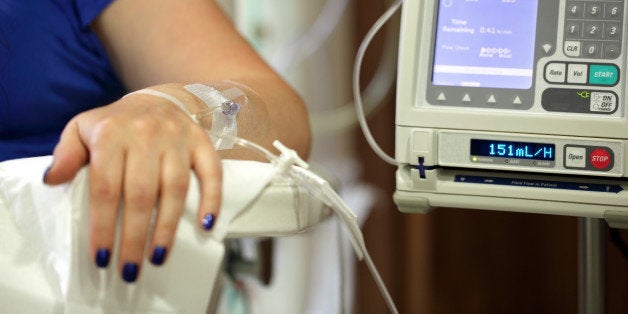
Breast cancer diagnoses in the U.S. will grow by as much as 50 percent by 2030, according to a new analysis by researchers at the National Cancer Institute, part of the National Institutes of Health.
The increase in cancer cases can be attributed to the aging of female baby boomers, a population of about 40 million American women born between 1946 and 1964 who also happen to be living longer, according to the researchers. In 2030, when those women reach 70 to 85 years of age, the number of breast cancer cases for women in the age range is expected to spike from 24 to 35 percent.
The study also found that as Boomers mature out of other age ranges, rates will go down. For example, women who will be between 50 to 69 years of age in 2030 will make up only 44 percent of new breast cancer cases, down from 55 percent in 2011.
Baby Boomers aren't the only factor in the projection. Different types of breast cancers will also become more or less common in the future, according to the analysis. For instance, ER-negative breast cancers -- tumors that don’t have estrogen receptors and thus don’t respond to hormone therapy, making them much more difficult to treat -- are expected to decrease from 17 percent of all breast cancer tumors in 2011 to 9 percent of tumors in 2030. Rosenberg isn’t sure why this is the case, but he suspects that because this type of cancer is linked to early childbirth age in women and a lack of breast feeding, lifestyle changes may be responsible. More American women are having their first child later in life, and breastfeeding rates are increasing in the U.S., as well.
Meanwhile, ER-positive in-situ cancers -- which respond to hormone therapies and stay put within a breast’s lobules and milk ducts, as opposed to invading other healthy tissues -- are expected to increase in proportion from 19 percent of tumors in 2011 to 29 percent in 2030.
“In sum, our results suggest that although breast cancer overall is going to increase, different subtypes of breast cancer are moving in different directions and on different trajectories,” said lead investigator Philip Rosenberg, Ph.D., in a statement about his study. “These distinct patterns within the overall breast cancer picture highlight key research opportunities that could inform smarter screening and kinder, gentler, and more effective treatment.”
The researchers used a mathematical forecasting formula to predict future cancer rates, based on in-house, nationally representative cancer data as well as population projections from the U.S. Census Bureau. The study is not yet peer-reviewed and published, but Rosenberg presented an abstract Monday at the annual meeting of the American Association for Cancer Research.
Dr. Otis Brawley, chief medical and scientific officer of the American Cancer Society, wasn’t involved with Rosenberg’s analysis but was in the audience during the presentation. He pointed out that while the numbers seem dire, it's important to remember that the outsized numbers don’t mean that the U.S. is about to face an epidemic of breast cancer. Rather, a woman’s overall chances for developing breast cancer will remain roughly the same -- around 1 in 8.
“I think that the way it was worded was perhaps unfortunate because the risk of breast cancer for an individual woman is going to stay about the same, but the absolute number of people who get breast cancer is going to increase from the increasing size of the population and the increasing number of people alive in their 70s, 80s and 90s,” he said in a phone conversation with the Huffington Post.
He also emphasized that the breast cancer cases projected to increase are of the kind with better prognoses and that are easier to treat: “If you can call any cancer ‘good,’ it’s going to be more of the ‘good’ breast cancers and less of the ‘bad’ ones.”
Dr. Clifford Hudis, chief of breast medicine service at Memorial Sloan Kettering Cancer Center, was also at the conference and praised the report for helping breast cancer researchers plan ahead.
“At the societal level, we certainly want to plan for these changes so we can cope adequately,” Hudis wrote in an email to HuffPost. “This report helps us make those plans.”
Hudis also pointed out that breast cancer is just one of many serious diseases that will evolve as U.S. demographics change.
“There will be a number of disease-burden shifts as the baby boomers age and the overall demographics of the U.S. continues to evolve,” he concluded.
The American Cancer society recommends that women begin screening for breast cancer in their 20s and 30s, initially by getting to know the shape and feel of their own breasts in order to tell when something changes, and then by a clinical breast exam every three years. Once a woman turns 40, annual mammograms and clinical breast exams should begin. Some women, because of their family history or genetic makeup, should be even more vigilant with screening at an earlier age or with more intensive methods.
About 232,670 people were diagnosed with new cases of breast cancer in 2014, and about 40,000 people died of the disease that year.
